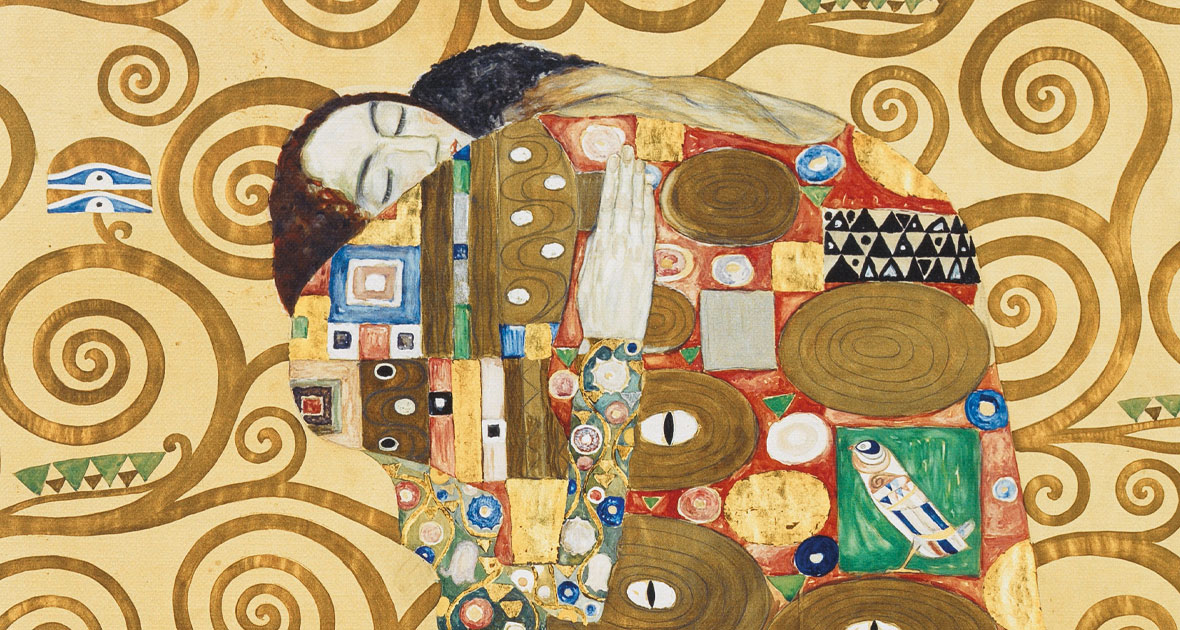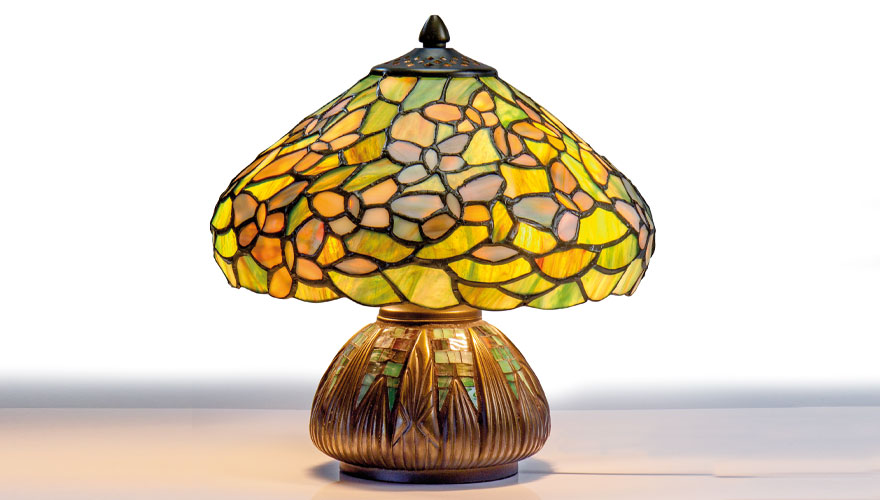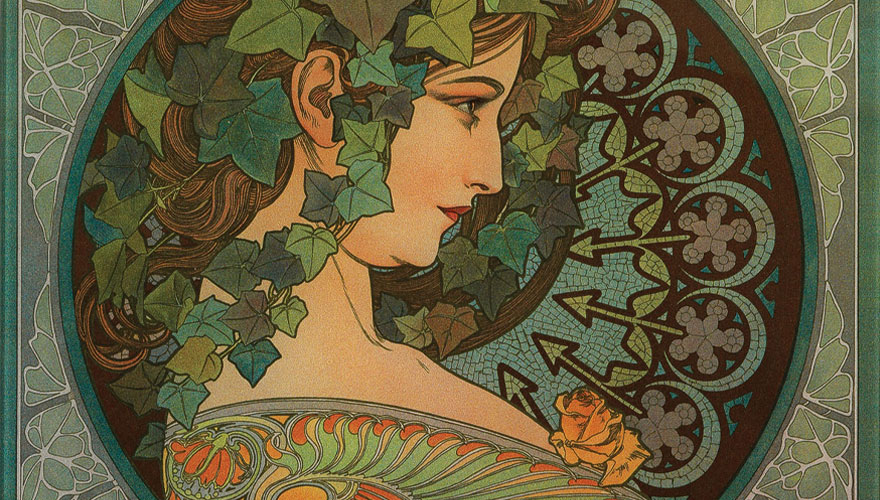
Art Nouveau: Departure into the 20th-century
At the turn of the 19th to the 20th century, a new conception of art made its breakthrough in many European countries. Known as Jugendstil in Germany, Art Nouveau in France, Modern Style in England, Liberty in Italy, Secessionsstil in Austria or Modernismo in Spain, various progressive artists' associations proclaimed a contemporary concept for art, architecture, and crafts. Art Nouveau aimed to be cosmopolitan, innovative, and progressive. Its art was not only to be exhibited in museums but, rather, to be part of the everyday life of as many people as possible. At the same time, artists developed a new use of forms and imagery. Typical Art Nouveau characteristics are the use of ornaments, floral patterns, and the reference to nature.
How did Art Nouveau develop?
The new art concept originated at the end of the 19th century. Many artists in Europe thought that art was in the midst of a crisis: the visual arts were dominated by historicism which had recruited its stylistic elements from various previous epochs such as Gothic, Renaissance, Baroque or Romanesque. This tendency to return to older epochs gave rise to criticism, especially because a style oriented towards the past could not reflect current developments in art, culture, and society. It was not only the fine arts that were criticised but also the crafts and trades. Progressive industrialisation made modern assembly-line production possible. However, there was often too little emphasis on aesthetics and quality. The result was cheap, mass-produced goods that often came across as tacky or trite. In addition to the rapid technical development, the consumers' behaviour and new forms of entertainment, alienation from nature occurred. In order to counteract these grievances and trends, painters, sculptors, architects, and artisans formed organisations in numerous European countries and campaigned for a fundamental change in art and society.

Art Nouveau as a universal language for art, design and architecture
Art Nouveau and other related art movements sought to change attitudes on several levels. First of all, the conservative style of historicism had to be eliminated. Art Nouveau artists were convinced that contemporary art could not emerge from a picture and use of forms that were partly already centuries old. Instead, the new forms of artistic expression should be original, individual, and modern. Moreover, the Art Nouveau artists were concerned with the self-image of art. Art was to be less elitist and have more of a place in people's everyday lives. This was closely connected to the abolition of the outdated notion of "higher" and "lower" arts. In the traditional academic understanding of art, the fine arts were classified as superior to crafts and the design of everyday objects. The Art Nouveau artists opposed this because only with equal rights for the different disciplines could art be firmly anchored in the lives of as many people as possible. Artists, architects and artisans were to work together to develop a style that could then be applied to as many areas of life as possible - from painting and sculpture to the architecture of buildings and the design of jewellery, fashion, furniture, tableware and many other everyday accessories. The production of everyday objects should also increasingly focus on high-quality materials, solid workmanship, and functionality. Basically, all products were to be made according to traditional craftsmanship, which was intended to counteract the soulless mass production. However, the Art Nouveau artists' idea of - in a positive sense - utilitarian art was not entirely new. The British "Arts and Crafts" movement in the mid-19th century had already advocated a very similar philosophy. Mass production in factories was a thorn in their side, and they wanted to counteract this development with artistic impulses and high-quality standards. In addition, the "Arts and Crafts" artists pursued a universal approach in which art, work and society were to be seen in a common context as well.
Art Nouveau Characteristics: Back to nature with many ornaments
The concept of universal and contemporary art required a new use of forms and imagery. That was to be progressive and innovative and not merely repeat the stylistic features of past epochs, as historicism did. Art Nouveau artists sought inspiration for the development of their style in forms and patterns found in the plant world. By borrowing inspiration from flowers, blossoms and trees, the artists of the Art Nouveau epoch tried to reconnect the public with nature. However, they did not copy the forms of plants. The plants rather inspired them to create abstract and playful patterns and structures with flowing lines. Such floral ornaments were no longer used merely as decorative accessories, they were sometimes even celebrated on a large scale. The Art Nouveau artists not only borrowed their designs from flora and fauna but also used many of their motifs. For example, they often made landscapes, animals and scenes in nature their subject matter. But portraits were among the frequent subjects as well. Women, in particular, were very popular as motifs. They were seen as symbols of naturalness, beauty and harmony and were shown in wide, colourful robes, with flowing hair and adorned with flowers. All these Art Nouveau characteristics laid the foundation for the desired differentiation from Historicism and the departure into the modern art of the 20th century.

The Art Nouveau epoch had a lasting influence on art history
Even though the heyday of Art Nouveau lasted only about 20 years, it had a great influence on the art, architecture and design of its time and left its mark on the epochs of the following decades. Thus, Art Nouveau is considered a significant impulse for the development of modernist art and for the avant-garde at the beginning of the 20th century. Some of the Art Nouveau characteristics and ideas were later to be found in various art movements - albeit in somewhat modified form - for example, in Art Deco, Bauhaus or Surrealism. In addition, many important artists emerged from the Art Nouveau epoch. In the field of painting, one name comes to mind in connection with Art Nouveau: Gustav Klimt. There is no doubt that his work significantly advanced the new art movement in Austria. With "The Kiss" and "Adele Bloch-Bauer I", he created two of the most famous paintings of all time. Moreover, he was also one of the founders of the "Vienna Secession", an art institution with its own exhibition house and magazine that significantly promoted the avant-garde in Austria. Other important artists of the Art Nouveau epoch include Alphonse Mucha, Josef Hoffmann, Koloman Moser, Louis Comfort Tiffany and Peter Carl Fabergé. Even in the 21st century, Jugendstil, Art Nouveau and Co. are still extremely popular. Some works of art created in the Art Nouveau epoch are among the most famous and expensive in art history, and Art Nouveau architecture still characterises the cityscapes of many European cities such as Paris, Prague, Vienna, Brussels, Barcelona and Berlin.
